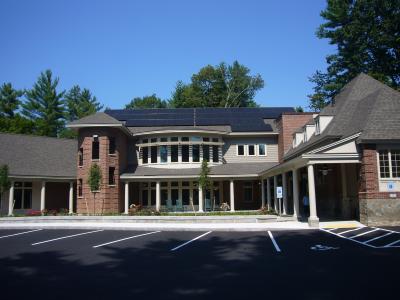-
Our Community
-
- Welcome Visitors About Durham's Community Climate Remembrance Project Diversity Welcome Statement Life in Durham Places to Stay Places to Eat Places to Park Transportation Schools Oyster River School District Welcome New Homeowners
- Durham Public Library Programs & Events Trails and Town Lands Conservation Commission Land Stewardship Conservation Lands & Parks Conservation Easements Trails Youth Organizations University of New Hampshire Durham Preservation Durham Historic Association
- Volunteer Town of Durham Land Stewardship Public Library UNH Cooperative Extension Churchill Rink Parks & Recreation Recreation Program Calendar Outdoor Recreation Activities Outdoor Recreation Sites Sustainable Durham Recycling Information Swap Shop Information Earth Day 2023
-
- Doing Business
-
Inside Town Hall
-
- Departments Assessing Building Business Office Code Enforcement Information Technology Planning Town Clerk/Tax Collector Parks & Recreation Boards, Commissions & Committees Agricultural Commission Conservation Commission Historic District/Heritage Comm. Other Boards & Committees Planning Board Zoning Board
- DCAT Media Productions DCAT Media - Programming DCAT Media Livestream Zoom Video Meeting Schedule Town Council Town Administration Public Hearings Public Safety Police Fire McGregor Memorial EMS (Ambulance)
- Public Works Engineering Division Operations Division Sanitation Division Water Division Wastewater Division Stormwater Town Directory Telephone Directory by Department Services Directory
-
-
Helpful Resources
-
- Quick Links Assessors Online Database Bids and RFP’s DCAT Media Productions GIS Digital Maps Jobs Online Services Parking Information Social Services Town Holidays Trash Pick Up Holiday Schedule Transfer Station & Recycling Center Information Curbside Refuse Collection by Street Zoom Video Meeting Schedule
- Town Documents Budget & CIP Forms & Applications Master Plan Tax Increment Finance (TIF) Districts Tax Maps Town Charter Town Code Town Reports Town Wide Master Fee Schedule Zoning Ordinance Voter Information
- Contact Us Cemetery Information Social Media Facebook Twitter Town Newsletter Friday Updates Town Meetings & Events Agenda and Minutes Calendar Public Hearing Notices State & U.S. Representatives
-
Durham Saves Energy
Durham Runs on Solar
The Town of Durham is committed to energy efficiency and renewable forms of energy.
Not only is this good for the planet, but it has proven to be a wise financial investment, as well. In 2014, the Town entered into the first to two power purchase agreements (called a PPA) for 120 kW of solar photovoltaic capacity on the rooftops of the Durham Police Station, the Durham Public Library, and Churchill Rink. As part of the FY2021 budget development process, the Town Council approved the Durham Energy Committee’s recommendation to purchase the arrays from the current owner/installer, ReVision Energy. Once the purchase is complete, Durham will have no monthly payment for the electricity generated by these arrays.
The Town entered into its second PPA in 2016, dramatically increasing the amount of power originating from renewable sources; enough, in fact, to cover all of the Town’s municipal electricity needs with the exception of the Wastewater Treatment Plant. For that facility, the Town contracts for wind power with a bulk electricity supplier. The Durham Energy Committee will be advising the Town on whether or not to purchase the 640 kW array at the gravel pit on Town-owned property in Lee in the coming year.
To review current data about the electricity being generated by the Town’s arrays, you can click on the links below to access offsite tools for each project.
PPA 1, 2014
Durham Public Library
Durham Churchill Ice Rink
Durham Police Station
PPA 2, 2016
Energy Use in Buildings
If appropriately designed, new buildings can lock in energy savings for the life of both commercial and residential buildings. We are fortunate that building science has now evolved to the point where buildings can be ‘net-zero’ – that is, they use only as much energy for heating and electricity as they generate onsite with renewable energy systems – and even more fortunate that the extra cost of these net-zero measures is more than offset by energy savings during the first few years of a building’s life. Building codes, including those pertaining to the use of energy, are updated on a regular schedule, with a major update typically occurring every three years.
In recognition of the long-term impact of new buildings on the environment, the community and the economy, Durham operates under a stretch code. This means that the standards for high performance are higher here than it is elsewhere, where they operate under older, less efficient codes. The Durham Energy Committee has been instrumental in helping to preserve Durham’s right to pass stricter standards on new buildings than the State of New Hampshire adopts. Furthermore, the DEC works with architects and builders during the Site Evaluation Review process to consider going beyond the minimum requirements of our energy code.
The Energy Considerations Checklist helps architects and builders consider how to improve new or renovated commercial buildings so that they go beyond the minimum required. In many cases, the upfront cost of ensuring a building is as energy efficient and PV- and EV-ready (that is, ready for solar energy on-site generation and electric vehicle charging) is minimal to non-existent. DEC members are able to have a conversation with the builder or their architect to make sure they have considered how to make their building as low-impact as possible, perhaps lowering the long-term carrying costs of their building.
LED Street Lights
For the last decade, the Town of Durham has reaped the benefits of a federal grant that allowed us to cover 100% of the cost to purchase and install 253 LED Retro-fit kits, replacing the old and inefficient metal halide and high pressure sodium streetlights. These lights continue to save Durham taxpayers money, while illuminating the Main Street Corridor, Pettee Brook Lane & Metered Lot, Emerson Road, and Jackson's Landing Rink parking lot.


